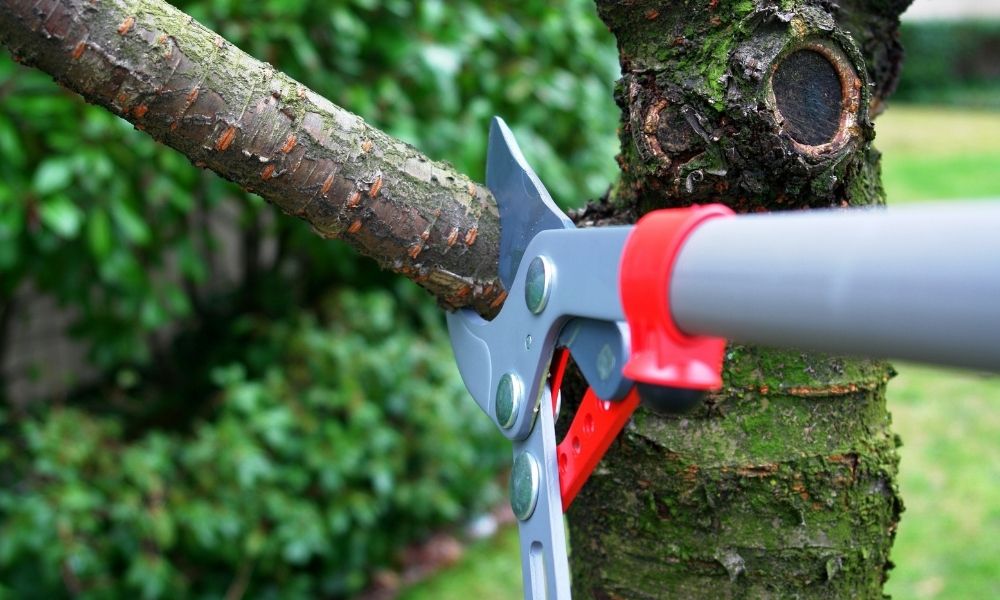As winter transitions to spring, many homeowners’ attention turns outside to their garden. There are seeds to plant, mulch to lay, soil to inspect, and—if your yard is fortunate enough to have them—trees to prune. But pruning a tree isn’t as simple as many homeowners think. Having a grasp of necessary tree pruning terms will help you better identify your tree’s needs.
Parts of the Tree
Branch
Branches are the outer limbs of the tree that protrude from the trunk and carry nutrients to the leaves. Twigs, boughs, and limbs also refer to branches of different sizes, with twigs being the smallest and boughs the largest.
Branch Collar
If you’re pruning a tree yourself, this is an essential tree pruning terms to know. This is the area that separates the branch from the tree trunk. When pruning, an arborist will cut just outside the branch collar to avoid any damage to a tree’s growth.
Crown
The crown refers to the entire upper, leafy portion of the tree that includes the leaves, branches, stems, and buds.
Trunk
The trunk is the central wooden stem of the tree where all the limbs originate from. It is the main hub for transporting nutrients from the roots up to the branches.
Wound
A wound on a tree isn’t much different from a wound on a human. A wound happens when the outer bark is removed, exposing the inner tissue, such as during pruning. Tree wounds can be subject to decay and fungi, leading to potential tree damage if not cared for properly.
Pruning Tools
Loppers
Loppers are very similar to the hand shears you would use to prune your hedges, but they have longer handles and thicker blades in order to handle tree branches.
Pole Pruners
Pole pruners have a similar blade to loppers, but they’re attached to a long pole. This allows them to prune branches up to eight feet away.
Types of Pruning
Crown Cleaning
This type of pruning focuses on clearing away dead, decaying, or non-beneficial branches from a tree’s crown. This helps improve the tree’s the overall health by slowing disease and reducing weight.
Crown Raising
Crown raising focuses its attention on the lower branches of the tree, removing them so the tree’s crown is “raised” higher. This is typically done to make it easier for people or vehicles to pass under the tree.
Crown Thinning
In some ways, crown thinning is similar to crown cleaning. However, instead of focusing on removing dead branches, it focuses on improving airflow and sunlight to improve the tree’s strength and durability.
Tree pruning can be a complex process. Fortunately, we offer tree trimming in Austin, TX to help your trees be the best they can be this Spring.

